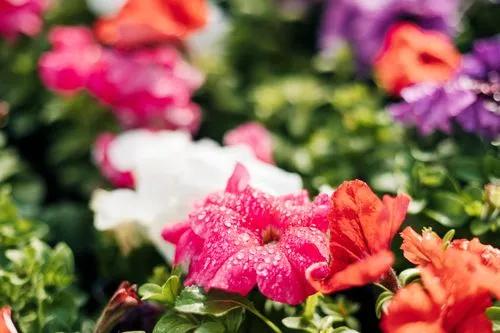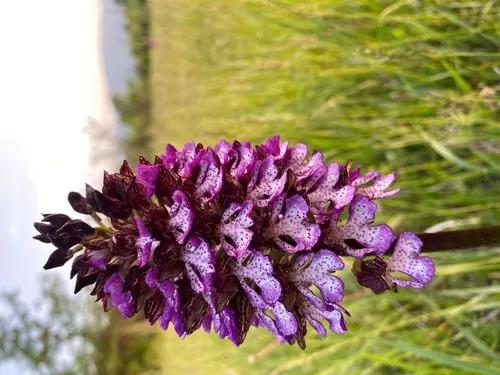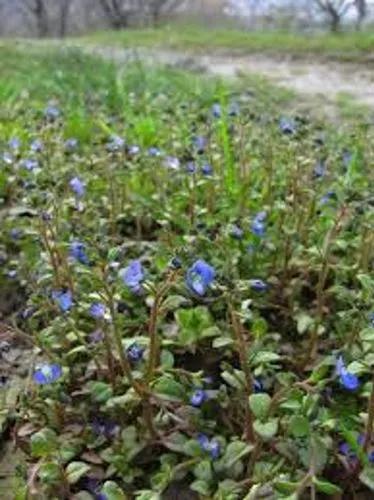Poinsettias are one of the most popular holiday flowers. Their familiar red blooms in combination with contrasting green foliage have become the omen of Christmas in Western culture.
Poinsettia Care
Euphorbia pulcherrima



Commonly known as Poinsettia, Euphorbia Pulcherrima is a mesmerizing flowering plant. It’s native to Mexico and Central America where it grows as a shrub. The plant can reach 2-13 ft (0.5-4 m tall). Poinsettia is not producing blooms. Its beautiful red flowers are called bracts and are actually modified leaves designed to attract insects to the tiny yellow flowers in their centers. Hybridizers have expanded the range of colors from the familiar red to pastel yellow and vibrant bicolors. As Poinsettias bloom during holidays, they need some extra care to keep them healthy. While it may be easier to buy new plants each year, it is possible to get them to rebloom the next season.
How to Care for the Plant

Water

Poinsettias require a special watering routine. Give the plant a drink when the topsoil feels dry to the touch from January to March. Starting from April, gradually decrease hydration, allowing the soil to get dry between waterings. Don’t let the stem shrivel, as this is a sign of a stressed or dying plant.

Pruning

Cutting helps to keep the plant’s shape and maintain its general appearance. You can trim dead and damaged leaves at any time, pinching or cutting them off at the base. Avoid cutting into a plant's main stems or its crown, a place where the leaves and roots meet.

Fertilizer

As with most houseplants, Poinsettias will benefit from occasional feeding during the growing season. An organic, balanced, liquid fertilizer once a month during spring and summer is recommended.

Sunlight

This flowering beauty is a light-loving plant. However, it should only be exposed to indirect sunlight, as harsh sun can damage it. The plant needs 12-14 hours of indirect sunlight daily.

Soil

Loamy soil is ideal for Poinsettia. It’s best to plant this greenie in a ready-to-used potting mix with 5.8 to 6.2 pH.

Propagation

Poinsettias are best propagated through stem cuttings. Choose a healthy 4 in (10 cm) branch and cut it with a sterile pruning tool. Put the cutting into a rooting hormone powder and plant it in a well-draining potting mix. Keep the ground consistently moist to let the cutting enroot.

Temperature

To keep this flowering greenie in bloom as long as possible, maintain a stable temperature of 65-75°F (18-24°C) during the day. Dropping the temperature to about 60°F (16°C) at night will not hurt the plant. However, cold drafts, contact with a cold window, or, more importantly, lack of decent light can injure the leaves and cause premature leaf drop.

Container

It’s best to use a 1-2 in (2.5-5 cm) big pot for growing Poinsettias at home. For larger plants, use a bit bigger container that is 2-3 in (5-8 cm) in diameter. It’s important to make sure the pot has at least one drainage hole to prevent overwatering.

Fun fact

The plant was first described by Europeans in 1834, and now it’s actively used in Christmas decorations thanks to its enchanting appearance.

Additional

For years, poinsettias have had the bad reputation of being poisonous. They certainly are not meant to be eaten by humans, pets, or livestock and ingesting poinsettias would probably cause some stomach upset, as would eating almost any houseplant. However, poinsettias have undergone extensive testing and there is no evidence that they are toxic or unsafe to have in the house. They are also safe to put into the compost.A more likely problem to watch out for is contact dermatitis. Euphorbias, the plant family that includes poinsettias, exude a milky sap when broken. Think of milkweed, another common Euphorbia. Many people are sensitive to this sap, which can cause an itchy rash. Be especially careful not to rub your eyes after touching the plants. To be safe, wash your hands after handling a poinsettia plant and try to avoid pinching or pruning them with your hands.

Popularity

83,275 people already have this plant 7,736 people have added this plant to their wishlists

Common pests

Nasty pests like whiteflies, mealy bugs, and spider mites like to feed on the plant’s juicy sap. In case you spot any pests' presence signs, treat the plant with an insecticide.

Frequent diseases

Poinsettia can suffer from root rot, powdery mildew, and bacterial leaf spot. If your plant gets infected, remove the damaged parts and treat the greenie with a fungicide. It’s recommended to maintain an appropriate watering routine to avoid such issues.

Botanist’s tips

Discover more plants with the list below
Related articles






